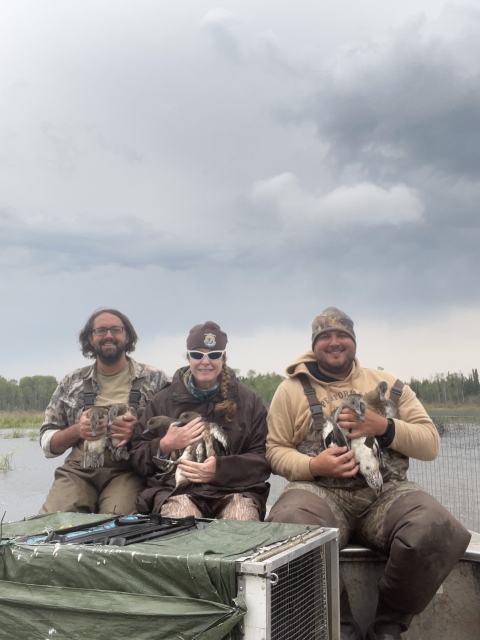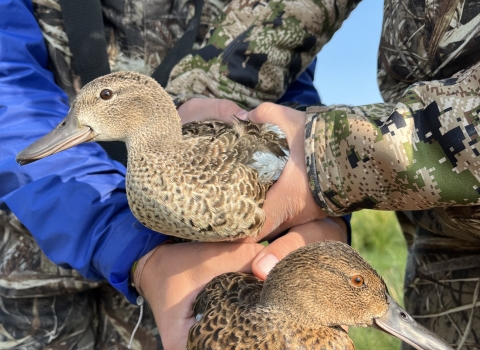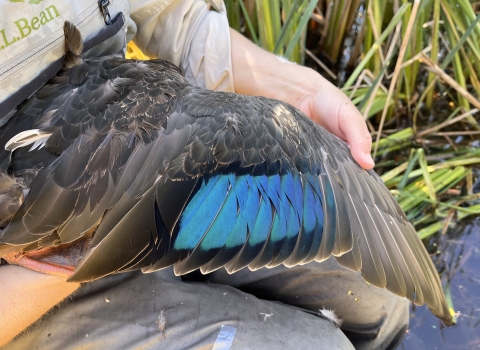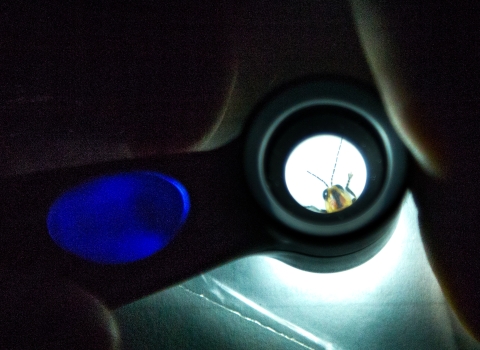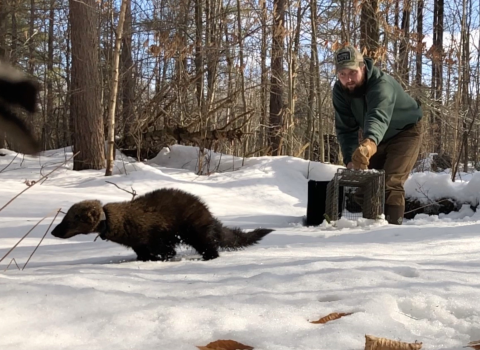After overcoming a few logistical obstacles, grocery shopping for 23 days’ worth of food and five days of driving, we finally arrived at an unimproved boat ramp in northern Saskatchewan. We loaded all our gear and food into the airboat and carefully traversed a large lake to our camp. Norm, the camp owner, greeted us and helped us unload. We immediately noticed the water levels were a meter lower than normal due to a dry spring and early summer, in addition to lesser snowfall this past winter. We unpacked our cold food items into a fridge and freezer that ran off a generator. It also ran the pump which brought lake water through faucets for showering and cooking, but you don’t dare drink it! The summer of 2022 required evening swims in the lake to cool off. However, this year was marked by more seasonal temps. We even had to build fires some nights to dry our clothes after working in the rain.
Each morning we spent long hours traveling by boat down the river to its associated marsh. Traps were quickly built and baited with barley in areas we saw ducks present. Unfortunately, we had a tough year trying to band birds. The large flocks of mallards we have seen in past years just weren’t there. A few broods of American wigeon and goldeneyes were seen but they generally won’t eat grain and therefore weren’t easily caught. A few flocks of blue-winged teal migrated through. We speculated that the record crop of wild rice south of us enticed most of the ducks away.
Despite the conditions, we enjoyed being in the boreal forest again. Lunch was usually eaten sitting on giant rock outcroppings, called the shield, that jut up out of the marsh. The shield has aspen and spruce growing with an understory of abundant blueberries. We watched bald eagles, red-necked grebes, yellow-headed blackbirds and many species of divers such as goldeneyes, buffleheads and ring-necked ducks while we ate. Occasionally a common loon would pop up next to the boat. At night we listened to these same loons calling while we ate our blueberry crisp and looked for the northern lights. Overall, it was not a very productive banding season at our location, but we still enjoyed the cool weather and the beautiful scenery.
